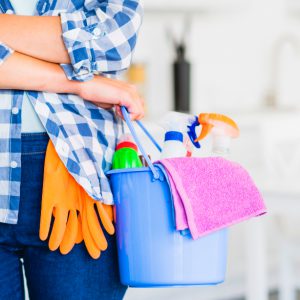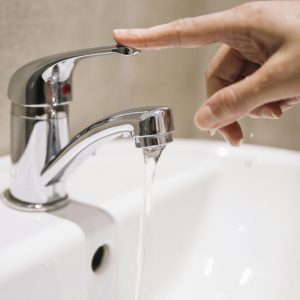What to Expect
Our customers’ health and safety is very important to us, so here we have listed help documents to aid you in preparing for a visit from one of our technicians. Please read carefully any section that pertains to services you need.
Roach Clean-Out Instructions
 In order prepare for your upcoming scheduled Roach Clean Out Service please do the following:
In order prepare for your upcoming scheduled Roach Clean Out Service please do the following:
- Plan on leaving the home for up to three hours after the technician completes the service.
- Any and all pets should be out of the service areas.
- Any and all cabinets should be cleaned out/emptied.
- Floors should be cleaned up (clothes, shoes, boxes, trash, etc.)
- Any Kitchenware (Dishes, silverware, pots and pans, etc…) should be covered in some way as not come in contact with the chemical. If this is not possible you must wash the dishes prior use.
- Any and all opened food containers, boxes, bags, etc… should be placed in a sealed container and/or placed in the refrigerator. This includes animal food.
These steps will help the technician in having access to all areas so he can do a thorough service. We do recommend a two week follow up service from the initial service date. This will be scheduled by the office after the completed initial service paperwork returns. We also highly recommend a monthly service plan be set up for a minimum of 3-6 months in continued efforts to keep the pests under control and help you get rid of them completely. Below, you will find a list of further sanitation efforts to help eliminate the necessities for the roaches to sustain life.
- Do not keep newspapers, boxes, or paper grocery bags as these provide helpful hiding areas.
- Do not leave any food containers unsealed. If there is not a way to re-secure that item once opened then place it in an air tight container.
- Dispose of any food or drink items that you will not be using immediately.
- Take the trash out on a regular basis.
- Clean up all dirty dishes immediately after use. Do not leave dirty dishes on “soak” in the sink as this provides the roaches with a food and water source.
- Dirty linens and clothes should be washed regularly.
Instructions for Water Run-off After Chlorination
 After your well has been chlorinated there are a few steps you need to know and do.
After your well has been chlorinated there are a few steps you need to know and do.
- Do not use water. Let it sit over night until next morning. Do not drink water, so make sure you have bottled water handy. The less water you run that night, the better chance you have of not getting the chlorine into your septic system. It also helps the chlorination process to sit overnight. By running the water you are cutting back the ability of the chlorine to work.
- The next morning, after chlorination, you want to start running the water off. You must run the water at 15 minute intervals. You do this by using a hose so that you don’t run the water into your septic system and so that the ground around your home does not become saturated. You must let the water run for 15 minutes then shut off for 15 minutes. You must do this for about an hour or until cannot smell chlorine. Do not wash any colored clothing, until you know that the chlorine is out of the system. It will fade your clothes.
What to Do if You Think Your Apartment or Home Has Bedbugs
 A thorough inspection is critical in identifying bed bugs and detecting harborage sites. Bed bugs will leave harborage sites at night to feed on its host (humans and/or pets) to get the necessary blood meal to survive. Bed bugs are usually found in close proximity to its host. Mattresses, box springs and other furniture should be carefully examined. As well as, cracks/crevices, around walls, headboards, baseboard trim, etc. Harborage areas will contain excreted blood specks, molted skins, and old eggshells.
A thorough inspection is critical in identifying bed bugs and detecting harborage sites. Bed bugs will leave harborage sites at night to feed on its host (humans and/or pets) to get the necessary blood meal to survive. Bed bugs are usually found in close proximity to its host. Mattresses, box springs and other furniture should be carefully examined. As well as, cracks/crevices, around walls, headboards, baseboard trim, etc. Harborage areas will contain excreted blood specks, molted skins, and old eggshells.
Some preliminary steps should be followed before a pest management professional inspecting and/or treating your home. Although initial infestations usually start in and around beds and furniture, severe infestations can spread throughout your home with bed bugs traveling up to 100 feet to find its host. Therefore, sanitation and cleanliness is a must. A clean house helps prevent the spread of bed bugs and assists in the inspection and treatment process.
Large sealable plastic bags should be available to remove infested linens, clothes, curtains, and drapes for cleaning. A regular hot wash cycle will kill bed bugs. Non-washable items such as shoes may be run through a hot dryer (only if the item can withstand the heat). Items in drier for at least 10 minutes with a minimum temperature of 140 degrees will kill all stages of bed bugs. Mattresses, box springs, and upholstery may be lightly treated with a residual liquid insecticide. Must allow these items to dry before reuse completely. However, infant and infirmed persons bedding and bed frames should not be treated. The use of a steamer on mattresses and box springs can be a useful control tool. You may be advised to purchase a mattress and box spring encasement. In extreme cases, furniture may need to be replaced. Infested areas should be clear of any loose items or any other obstruction.
After a thorough inspection and treatment is completed further instructions and future treatment may be advised. All occupants, including pets, should be prepared to vacate during treatment for no less than two hours if needed. It would be best if you vacuumed often before and after treatment. bed bugs may become more active directly following treatment. Feel free to ask your pest management professional for any further questions regarding the recognition, biology, habits and other treatment/control methods.
If you have any further questions please contact the office at (888) 588-5044 or (540) 872-2616.